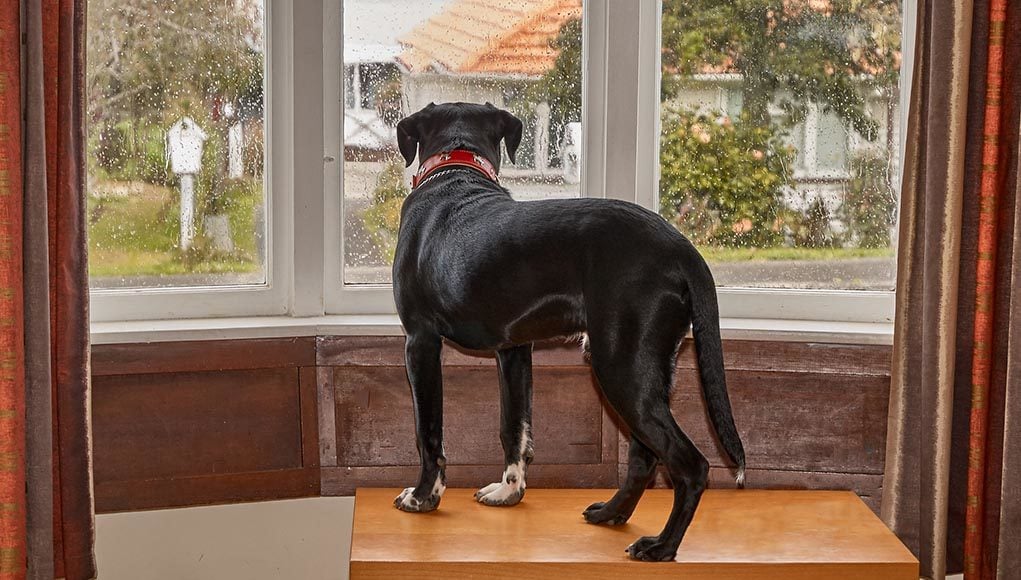Table of Contents
- What is Puppy Separation Anxiety?
- Tips on How To Deal With Puppy Separation Anxiety
- Frequently Asked Questions
- How To Deal With Puppy Separation Anxiety Summary
When adopting a new pup, it's essential to know that some puppies can develop separation anxiety. In this article, we'll tackle everything you need to know on how to deal with puppy separation anxiety.
Keep in mind that this behavior is not malicious. They are a panic or a coping behavior. That's why punishing your puppy will not help separation anxiety.
Let's try to reverse things to put things into perspective. Let's say you're a baby feeling safe and sound with your parents and siblings.
And then suddenly, you're removed from your family and you're brought to a new place, with new people. It's a whole different environment.
Isn't this scary? That's how your puppy feels at first when you bring them home for the first time.
Below we'll discuss tips on how to help and prevent separation anxiety in our puppies. But first, let's tackle, what even is separation anxiety?
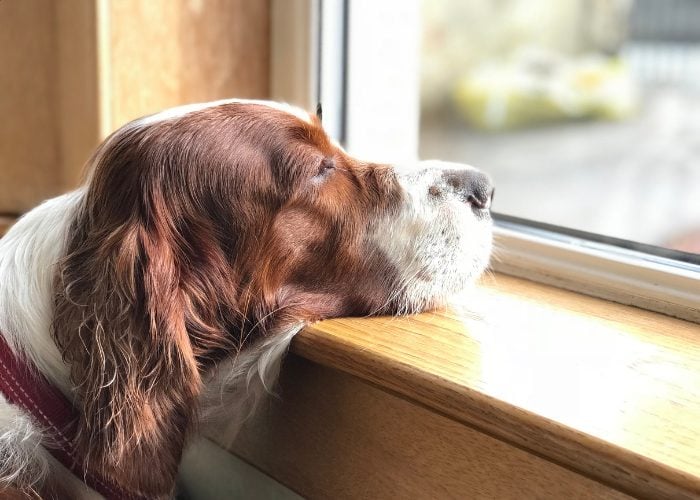
What is Puppy Separation Anxiety?
Before we discuss how to deal with puppy separation anxiety, let's tackle first, what even is separation anxiety in dogs.
Canine separation anxiety is a stress response a dog experiences when they are separated from the people they are close with even for a short period.
Separation anxiety can happen to puppies and adult dogs. This is where they exhibit extreme stress from the time you leave them alone.
Symptoms of Separation Anxiety
Before you jump to conclusions, here are a few symptoms of separation anxiety that you should look for:
- Pacing or Whining when you're preparing to leave
- Excessive Barking or Howling
- Urinating or defecating inside the house
- Excessive drooling or panting
- If you come home and see your house in a mess like scratched sofas or other destroyed furniture
Causes of Separation Anxiety
Up until now, it's not fully understood why some dogs suffer from separation anxiety and some don't. But always remember that this is just your dog's panic response behavior.
Here are some scenarios that can trigger separation anxiety:
- Suffering a traumatic separation
- The sudden switch in schedule
- Moving to a new house
- The sudden absence of a family member
- Being left alone when conditioned to constant human contact
What to Expect in the First Few Days with Your Puppy
When you first bring your new puppy home, you might see these behaviors in the first few days. This is just a heads up so you'll know what to do and it'll be much easier to deal with.
First, your pup might cry when they can't see you. They tend to follow you around, everywhere you go, every minute of every day. Well, when they're not napping that is.
Secondly, they'll howl, bark, or cry when you put them in their crate. Thirdly, they are most likely to be frightened by loud unfamiliar noises like a vacuum cleaner.
Since they're scared of being left alone, they're most likely to be restless at night and have trouble falling asleep.
Remember that all of these are normal puppy behaviors. The way you'll handle these things will affect your puppy's adjustment to their new home.
Be patient and understanding. As your new puppy comes to their new home, it's important to start to build a good relationship.
Prepare them for their new routine where you guys will be going on walks, playtime, and even scenarios where you'll be working and spending some time away from home.
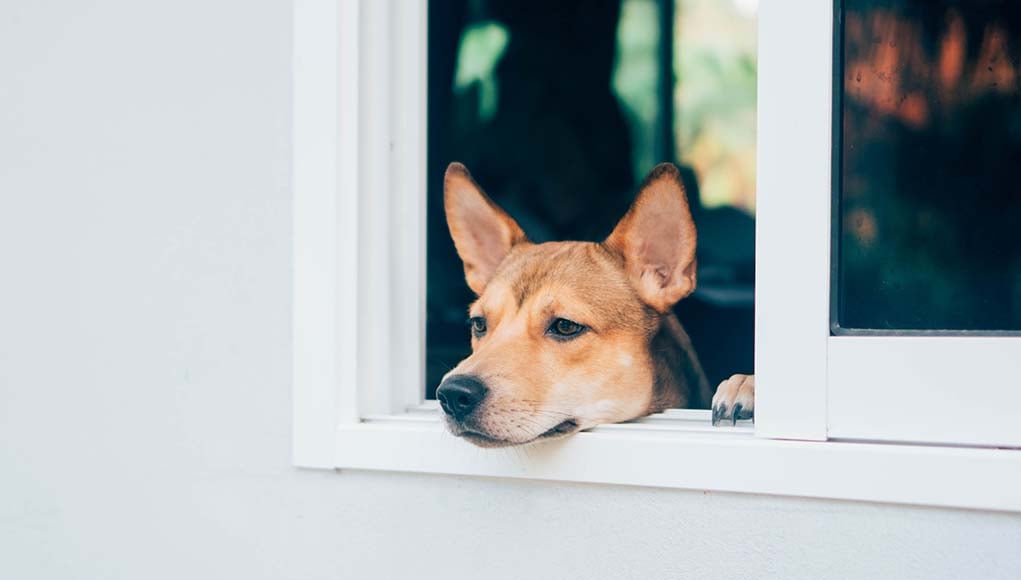
Tips on How To Deal With Puppy Separation Anxiety
Keep Everything Calm
Once your new puppy is in their new home, make sure that everything is calm and mellow for the first few days. I know you're excited since your new puppy is finally home, but trying to reduce noise and chaos can help them settle in nicely.
Too much excitement and noise can startle your pup and this can either cause stress or discomfort in their new environment.
Give Him Enough Attention
Secondly, you have to make sure that your pup is getting enough attention for his new family. Make your pup involved around the house.
But before anything else, if you have children in your home, it's important to teach them how to handle dogs.
As the parent and dog owner, it is your responsibility to monitor them when they interact, especially during their first few days.
If you're still unsure of adopting a dog because you have children at home, here are medium-sized to small dog breeds that are good with children.
Set Up a Routine
Thirdly, it's also important to keep a routine. Dogs thrive on routines. This can help them easily adjust to their new home.
Make a schedule for feeding time, walks, potty breaks, and the use of a crate. When it comes to making a routine, you need to be consistent.
There's no point in making a fixed schedule if you're just going to follow it sometimes.
Create a Safe Enclosure for his Crate and Alone Time
Picking a place for his crate where he will feel safe is another tip on how to deal with puppy separation anxiety. Decide a room or corner where it's not too isolated and won't make them feel alone.
A lot of dog owners choose to put the dog crate in their bedrooms. This way, their puppy can feel extra safe because they feel close to their new family.
The sound of your voice can help soothe their uneasy feeling and can even make them feel safe. However, expect some whining or barking from time to time as he is still trying to settle himself down.
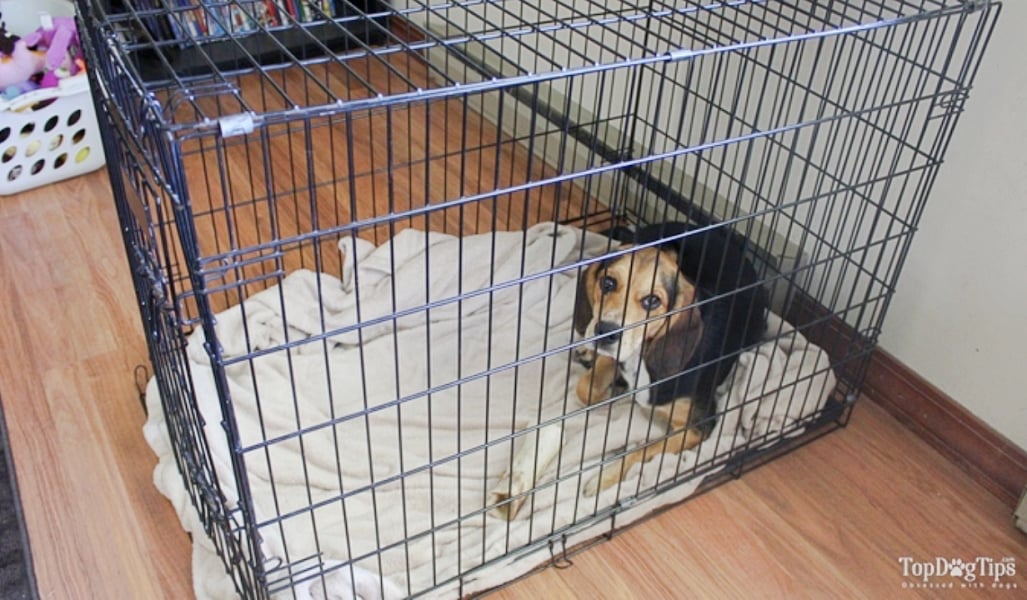
Make Sure You’re Using the Right Size Crate
Also, don't forget to buy the right size crate for your pup. Provide something that can make them feel comfortable and safe.
They should be able to stand up, turn around, and lie down comfortably inside.
According to experts, if you have a puppy, it's much better to buy a larger crate that has a divider. This way, you can use the divider to create a smaller space when your pup is still young and small. And later on, you can move it or remove the divider entirely when they've grown larger.
Ensure that the Crate is a Positive Space
The dog crate should not be a place they are afraid of or resents. Instead, a puppy's crate should be one of their favorite spots.
In addition, his safe space can also be a room or a small corner, not just their crate. To make a positive and safe space for your pup, you'll have to spend time with them in that space.
It can be where you'll play, cuddle, or work on positive reinforcement training. Reward your pup every time they choose to spend time in their space by giving them their favorite treat.
Also, always remember to never punish your puppy by sending them to this area. This will help them not associate it with negative feelings or anger.
Provide Enough Exercise and Interaction when You're Home
Giving them enough exercise and playtime when you're still at home can help with separation anxiety. How? Well, a tired puppy will most likely fall asleep when you leave.
It also reduces their anxiousness in general. Try this by playing or letting them play with interactive puzzle toys for brain exercise.
Consider Doggy Daycare or Dog Walkers
If all of these techniques can't help your dog, maybe it's time for you to consider dog walkers or daycares. It may not be the cheapest answer, but outside help may be a great solution for puppies that are struggling with separation anxiety.
Dog walkers can help give your puppy a break from your home and get some exercise. They can also help you provide some insight into your dog's behavior during the daytime.
But hiring a dog walker is not an easy task. You'll firstly need to find the right candidate, interview them, and check for their reviews. You don't want your pup's babysitter to be irresponsible, right?
On the other hand, dog daycares are not such a bad idea. Here, they can burn excess energy and socialize with other dogs.
Teach your Puppy How to be Alone
Before you start training your puppy, make sure that these training sessions are just 5-10 minutes. Short sessions of practice can go a long way!
When it comes to adopting a new puppy, you'll need to practice separation routines every day. But remember to work at a level of separation where they will not show or feel any signs of stress.
When it comes to teaching your puppy how to be alone, it's important to not jump into just leaving them all by themselves. Start by practicing separations in the same room first.
Practice this in your puppy's safe room or safe area. We recommend having a baby gate set up in the doorway for these practices.
Practice Separations in the Same Room
- Step outside of the puppy's safe area and say “yes” immediately and toss a treat for them if they stay in their area. Practice this until your pup has successfully stayed in its space 5 times in a row.
- If your puppy comes out and follows you, do not give them treats. Wait for them to choose to go back to their space.
- When they finally go back in, say “yes” again and toss a treat to your puppy.
Go Through Separation Management with You Out of Sight
When it comes to this kind of practice, it is best to have a Wi-Fi-enabled camera set up so you can see if your puppy is showing signs of stress.
- When you're going to leave them, use a consistent indicator cue like “I'll be back”, then take a step out of sight then say “yes” again.
- These indicator cues are important so your puppy will know that they have not been tricked and they are assured that you'll be coming back
- Return and toss them their favorite treat
- Start to build duration with you out of sight
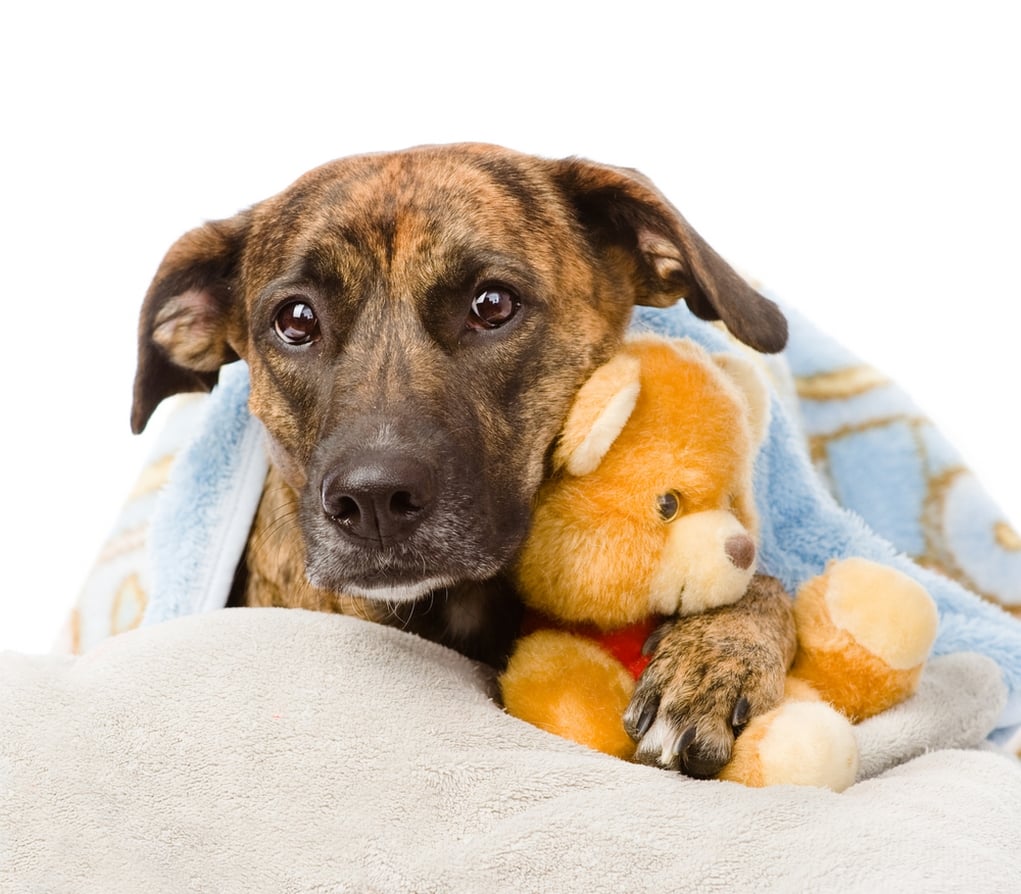
Frequently Asked Questions
Do puppies grow out of separation anxiety?
Unfortunately, dogs that are suffering from moderate to severe separation anxiety do not outgrow it.
This is because this condition has nothing to do with age. However, very mild separation anxiety can improve over time.
Separation anxiety will not improve on its own. Dogs that suffer from this condition need intervention and proper treatment. If left untreated, the anxiety usually becomes worse.
With proper medication and behavioral therapy, you can provide relief to your dog.
What dog breeds have separation anxiety?
If you're still on the fence about adopting a dog, here are a few dog breeds that are most likely to suffer from separation anxiety.
However, keep in mind that any other dog breed can still suffer from this condition due to traumatic events.
According to Furbo's research, here are the top 10 dog breeds that are prone to separation anxiety.
- Labrador Retriever
- Border Collie
- Cavalier King Charles Spaniel
- Jack Russell Terrier
- German Shepherd
- Australian Shepherd
- Bichon Frise
- Vizsla
- German Shorthaired Pointer
- Toy Poodle
Is it best to ignore a crying puppy?
On the first nights of having your new puppy, they might cry a lot. Ignoring them at night won't help them build confidence.
It can also make things worse. Puppies should be taught how to be independent slowly. It is never recommended to ignore new puppies crying at night since they may need to use the toilet.
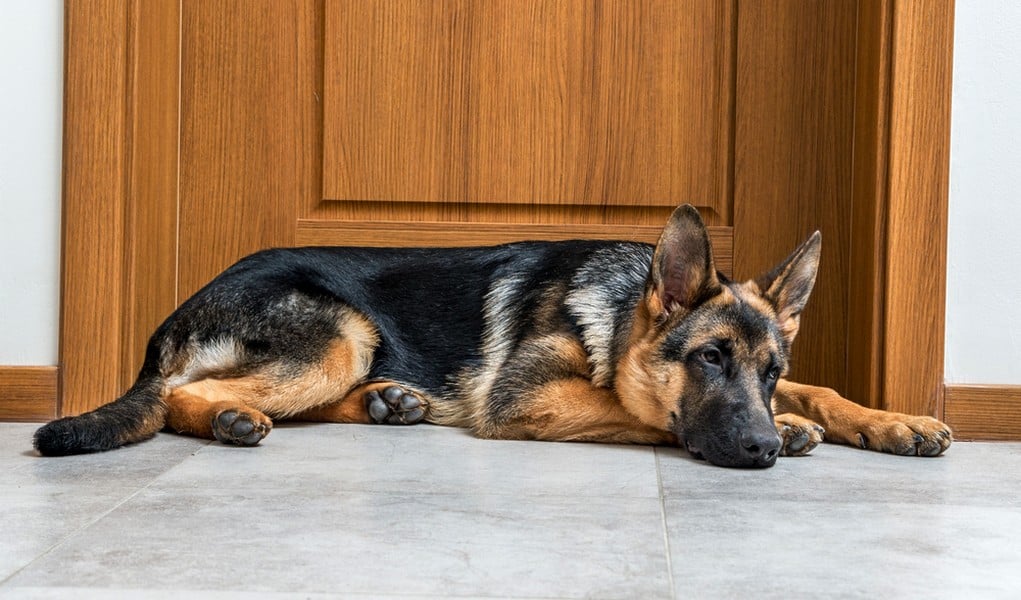
How To Deal With Puppy Separation Anxiety Summary
When you finally bring your new puppy to its new home, it may take a while for them to settle in. It can also develop puppy anxiety.
Separation anxiety in dogs is not a malicious or harmful condition. It is simply a coping behavior in dogs caused by a separation trauma.
Separation anxiety is a stress response that happens when they are separated from their close family member even for a short period.
So if you've just adopted a puppy, your puppy is now searching for their mother and siblings. Your home is now an unfamiliar territory for them. This can cause stress and discomfort for puppies.
Fortunately, there are plenty of ways how to deal with puppy separation anxiety. These tips can go from remaining calm to teaching your pup how to be alone.


